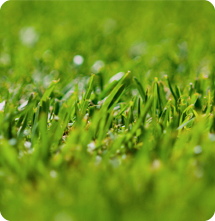 Have you noticed mud balls on your lawn lately? Do you know what are they? Are they a cause for concern? And what’s causing them?
Have you noticed mud balls on your lawn lately? Do you know what are they? Are they a cause for concern? And what’s causing them?
When the soil under a lawn has a healthy population of earthworms sometimes small mounds of soil or ‘mud balls’ can be found on the surface of the turf. Mud Balls are the castings from the previous night which have now passed through the earthworms and have come to the surface through tunnels created below the surface of the lawn.
These mud balls are most common during Spring and Autumn because of the prime conditions of soil moisture and temperature; perfect for earthworms.
Earthworm activity acts as a natural aeration of the soil beneath your lawn but there is also a down side. The mud balls can be quite slimy in texture because they contain natural secretions from the earthworm’s digestive system as well as soil. Allowing mud balls to lay on the surface of the grass will allow them to be smeared across the lawn during activities such as mowing, walking and playing. This can lead to a very muddy and slippery lawn; the castings also create a perfect environment for weeds to germinate and take hold during next Spring.
Lawn varieties like Sir Walter Buffalo are less susceptible to mud ball damage.
We don’t recommend using a pest control treatment to deal with earthworms since they do a fantastic job aerating and making the soil healthy.
A few ways that you can reduce the activity in a natural way:
Rake up and remove leaves that have fallen and use a catcher when mowing so that the grass clippings aren’t left on the lawn to increase the amount of organic matter and the moisture level in the soil below; dead and decaying matter on the lawn will encourage earthworm activity since it is a food source for them.
Assess the adequacy of the drainage for your lawn and reduce the amount of watering in periods with consistent rainfall since heavier clay and wetter soil will also encourage earthworms with their abundance of soil flora, fauna and bacteria.
Rake or sweep casts off the lawn using a stiff broom, rake or bamboo cane; probably only efficient if you have a small amount of mud balls or a fairly small lawn. Undertake this when the castings are dry to limit the possibility of smearing the castings and making a bigger mess.
Earthworms are actually a sign of a healthy lawn; they help in breaking down thatch, produce usable nitrogen in the soil and increase decomposition. In fact, 25% of a lawn’s seasonal nitrogen needs can be provided by five or more earthworms per square foot of soil.
As the moisture levels reduce, the earthworms will bury back down into the root system and continue on with the great work that they do; you won’t even notice them until the next time conditions are right for them to move closer to the surface again.




